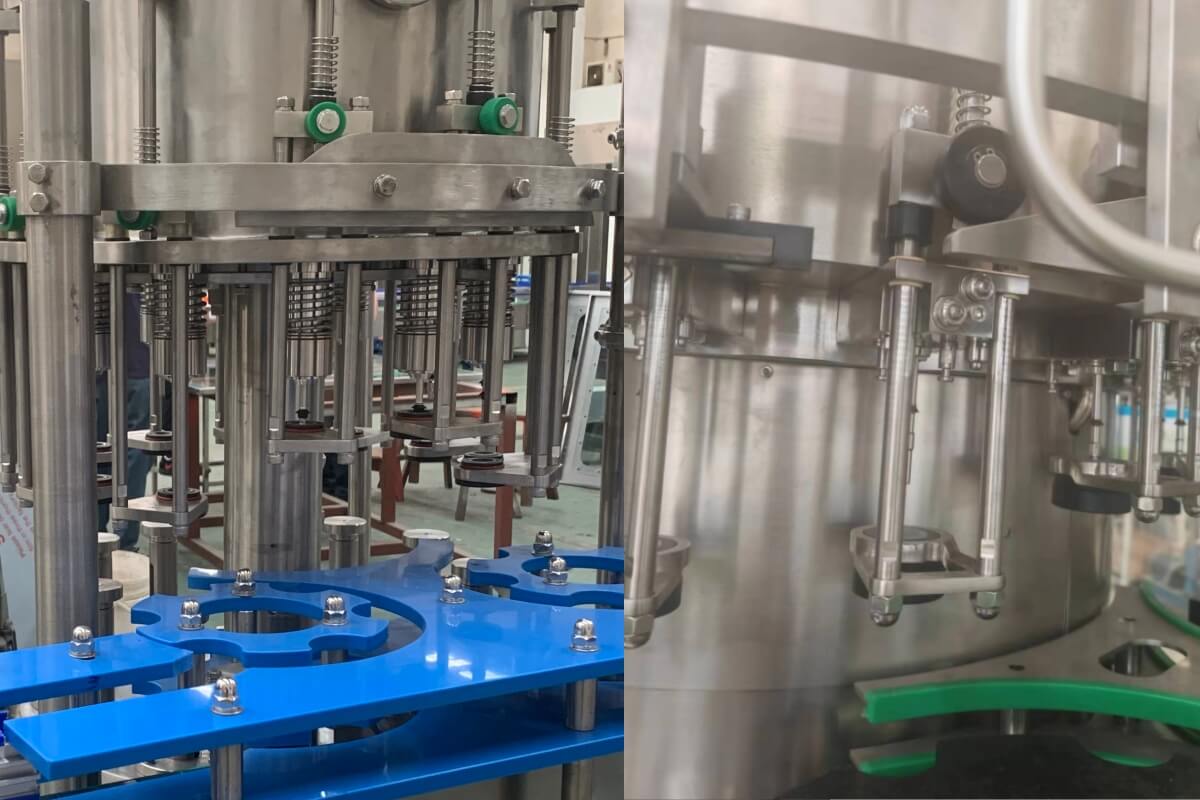Filling machines play a vital role in industries such as beverages, pharmaceuticals, and cosmetics, where precision and efficiency are crucial. At the core of these machines are their valve systems, which control liquid flow and ensure accurate filling. Fully electronic valves and traditional mechanical valves are the two primary types, each offering distinct advantages. Understanding the differences between these valves is essential for manufacturers to choose the right technology for their production needs.

How Do Filling Valves Work?
Filling valves regulate the flow of liquids into containers, ensuring consistent quantities are dispensed with minimal waste. These valves serve as the “gatekeepers” in the filling process, opening and closing to allow liquid to flow at precise intervals and volumes.
-
Control Mechanisms:
Valves rely on external controls to determine when to open or close. These controls can be mechanical, electronic, or a combination of both.
-
Primary Goals:
- Maintain consistency in liquid volume.
- Prevent spills or overflows.
- Optimize filling speed without compromising accuracy.
The choice between electronic and mechanical valves often depends on production scale, product characteristics, and the desired level of automation.
Fully Electronic Valves: Technology and Advantages
Key Features
Fully electronic valves utilize sensors and electronic controllers to precisely manage liquid flow. Equipped with advanced technology, these valves allow for real-time monitoring and adjustments to ensure optimal performance.
- Digital Control: Operated through a centralized control system, enabling precise programming.
- Instantaneous Response: Reacts quickly to changes in liquid flow requirements.
- Customization: Can be programmed for different container sizes and liquid viscosities.
Advantages
- High Precision:
Electronic valves excel in accuracy, minimizing product loss and ensuring consistent fill levels. This is especially valuable for high-value products like pharmaceuticals or premium beverages.
- Speed and Efficiency:
These valves enable faster filling cycles, enhancing overall production capacity.
- Reduced Waste:
Precise control minimizes overfilling or spillage, saving costs in the long run.
- Cleaner Operation:
Fully electronic systems often feature self-cleaning capabilities, reducing contamination risks.
Applications
Fully electronic valves are ideal for industries with stringent quality standards or high-volume production needs, including:
- Bottled water and soft drinks
- Alcoholic beverages
- Pharmaceuticals requiring sterile environments
Traditional Mechanical Valves: Simplicity and Reliability
Key Features
Traditional mechanical valves rely on physical components, such as springs, cams, and levers, to open and close. These systems can be manually or semi-automatically operated, depending on the machine’s design.
- Mechanical Operation: No electronic components; entirely manual or driven by mechanical actuators.
- Durable Design: Built for simplicity and robustness.
Advantages
- Cost-Effective:
Mechanical valves are generally less expensive to produce and maintain, making them a budget-friendly option for smaller operations.
- Ease of Maintenance:
With fewer complex components, repairs and replacements are straightforward.
- Durability:
The simplicity of mechanical designs often results in long-lasting performance in less demanding environments.
Applications
Mechanical valves are commonly used in small to medium-scale operations, such as:
- Local breweries
- Small-scale food processing plants
- Entry-level cosmetic production lines
Comparative Analysis: Electronic vs. Mechanical Valves
| Aspect | Fully Electronic Valves | Traditional Mechanical Valves |
| Precision | High; suitable for sensitive applications. | Moderate; minor inconsistencies possible. |
| Speed | Faster filling cycles. | Slower due to physical component movement. |
| Maintenance | Requires skilled technicians for upkeep. | Simple and easy to maintain. |
| Initial Cost | Higher upfront investment. | Lower cost, ideal for tight budgets. |
| Durability | Dependent on technology quality. | Highly durable with proper care. |
| Applications | High-volume, automated lines. | Small-scale, cost-conscious setups. |
| Service life | 20 years | 10 years |
This comparison highlights the trade-offs businesses face when choosing between these two technologies.
The choice between fully electronic and traditional mechanical valves ultimately depends on a company’s production needs, budget, and long-term goals. Fully electronic valves provide unmatched precision, efficiency, and automation capabilities, making them ideal for high-volume and high-value applications. Conversely, traditional mechanical valves remain a reliable and cost-effective option for smaller operations.
By understanding the strengths and limitations of each valve type, businesses can make informed decisions that enhance their productivity and profitability.


